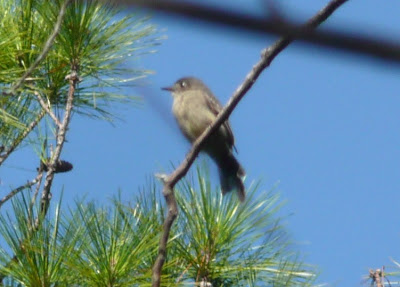September 28th
This could be a good time for birding in South Florida with a cold front passing through. There is a great expectation for some great fall-outs. We shall see.
We also have a tropical storm brewing to the south, pushing up towards Florida,which should also contribute to the expected birding events. I think that there is also a possibility of pelagic species to be pushed close to shore. This maybe why we had an unusual observation yesterday of a red-necked phalarope at Bunch Beach.
For me there is irony in this observation of the phalarope in that I had been tagging along with Mr McGrath as he was conducting his bird survey, but elected to leave shortly before he found the phalarope. Could of had a lifer. The red-necked phalarope is not really seen in southwest Florida.
Chose to check-out the Sanibel Lighthouse area for any migrants stopping yet, but found it very quite. Did find a female Prairie Warbler and a female American Redstart, but that was all for warblers. The migrants that I did find was a couple of Merlins and a Peregrine Falcon. One other bird I found that surprised me a bit was a Red-headed Woodpecker sitting in a snag with a couple of Red-bellied woodpeckers.
By tomorrow we expect a lot more activity here.
Before reaching Sanibel Island I opted to try for the phalarope at Bunch Beach. I really did not expect to relocate it, but you never know unless you try. Well, I tried and will have to book onto a pelagic birding trip some time in the future to score on the bird. There is a trip advertised for November 14th out of Ponce Inlet in New Smyrna Beach.
Walked both ends of Bunche Beach and say about the same as yesterday. Had to be about 200 Red Knots scattered across the mud flats which is a great increase in activity. Heard a White-eyed Vireo in the scrub back of the beach and observed a FOS Merlin circling the mud flats, probably looking for a tasty little peep for lunch. Diffidently a great site for birding. Have encountered international, basically British, birding groups visiting Bunche Beach on many occasions.
To round out the three species of falcon found here in this season, I stopped by Domestic Street in south Lee County were I knew I'd be able to locate a couple of Kestrals. Which gave me the trifecta on falcons for the day.
 |
| Least Sandpiper |
 |
| Least Sandpiper |
 |
| Western Sandpiper |
 |
| Black-bellied Plover |
 |
| Red Knots |








































